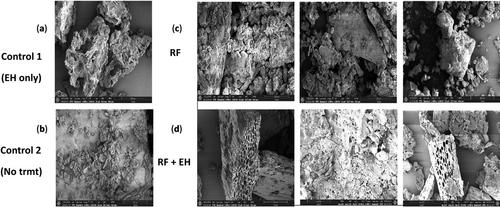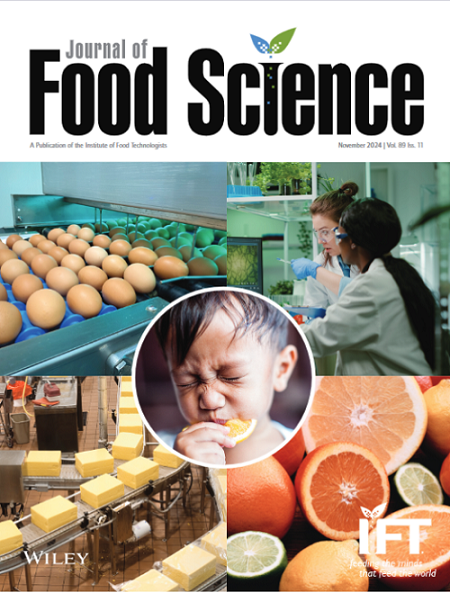Enhanced Hydration, Solubility, and Structural Properties of Corn Insoluble Dietary Fiber via Optimized Radiofrequency and Enzymatic Hydrolysis
Abstract
ABSTRACT
Native corn insoluble dietary fiber (IDF) exhibits limited functionality due to its coarse structure and low hydration properties. Conventional treatments often compromise nutrient integrity or leave chemical residues. This study introduces a synergistic radiofrequency (RF) and enzymatic hydrolysis (EH) approach to enhance IDF functionality sustainably. Optimized RF parameters (17,647.06 W/m2 power density, 1750.81 W/kg adjusted SAR, 136.183 kV/m electric field intensity) preconditioned the fiber matrix, reducing median particle size by 39% (320.88 → 196.32 µm) and doubling specific surface area (0.0309 to 0.0744 m2/g), thereby enhancing enzymatic efficiency. The combined RF + EH treatment outperformed EH alone, increasing soluble dietary fiber (SDF) by 50% (4.2% vs. 3.6%) and reducing IDF content to 42.4% (vs. 43.0% for EH). It uniquely balanced hydration (moisture content: 8.94% vs. 7.51% for EH) and structural integrity, preserving crystallinity while increasing amorphous regions for improved water-holding capacity (4.96% vs. 3.09% control) and fermentability. Compared to alkaline/thermal methods, RF + EH eliminated chemical residues and minimized nutrient loss. Color analysis confirmed structural modifications (ΔE = 14.59), while XRD and SEM validated enhanced porosity and retained mechanical strength. This method offers a scalable, energy-efficient alternative for producing functional fibers suited for nutraceuticals and high-fiber foods, addressing industrial needs for cost-effective and sustainable dietary fiber modification.





 求助内容:
求助内容: 应助结果提醒方式:
应助结果提醒方式:


